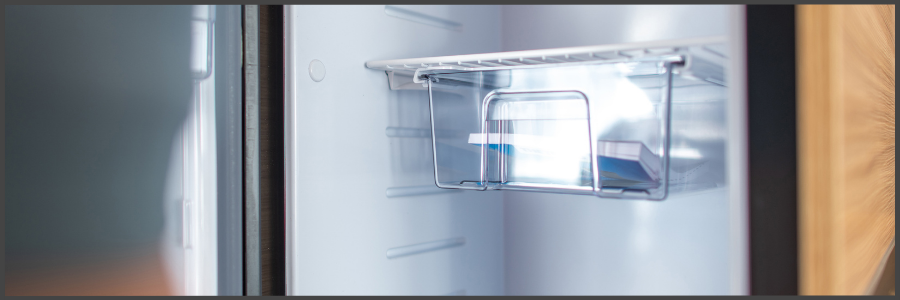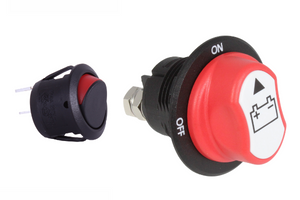Extending Cable for 12V Compressor Fridges

Installing a 12V compressor fridge can look quite simple on paper, but some not-so-obvious issues need to be taken into account to prevent problems. Today we take a look at these, how they may affect your build and what can be done to resolve these issues.
How do I extend my fridge's cables?
12V fridges will often come with some cable already attached (this may even have a plug) but often this cable is simply too short. Extending the cable using some more of the same size is the first thing that some will think of doing, but this can cause problems. The cable on the fridge will have been installed taking that length of cable into account, and by going any longer than the length provided with the same size cable could result in you suffering excessive voltage drop. Compressor motors are very sensitive to voltage and need the supply voltage to be kept high to start up, so excessive voltage drop means that the fridge could become less efficient or even not work at all. Quite often, you will need to use extension cables several sizes lager than those supplied to counter this voltage drop and you can work out what this needs to be using our voltage drop calculator.
Some manufacturers may provide details in their manual of what size extension cables to use, so if this information is available we would recommend following their advice.
Working out the voltage drop
Manufacturers will typically provide you with the fridge's nominal current draw which is the current the unit will typically draw once the compressor motor is up and running, however, this isn't the whole story. Compressors require a higher current very briefly upon start-up meaning that, at times, your fridge might require a current 5-15 times higher than the nominal current draw specified. Manufacturers typically don't provide this in their specifications and we suspect that it's because if a customer sees a peak current draw of 15A, even if it only lasts for 0.5 seconds, it would make the product less appealing in the 12v world where minimising energy usage is critical.
It is important to know what this peak current is in order to carry out the voltage drop calculation and make sure there won't be any performance issues. For this reason, you may need to speak with someone over the phone at the retailer or manufacturer to find out this information before you use our voltage drop calculator.
The recommended cable size is much larger than the size already attached. How do I connect it?
Once you have worked out the cable size required to extend the cable you will likely find it is much larger than the cable already fitted to the unit, presenting you with the problem of joining dissimilar sized cables. Using a butt connector or splice connector designed to take similar sized cables in each end will probably not be a practical solution, so how do we join them? It might be that we need to use a multi-way connector that will accept both cable sizes. If you are unable to find a multi-way connector suitable for both cable sizes a power post or busbar may also be an option. These would allow the larger cable to take the power to the power post or busbar which would then be fed to the smaller cable.

How do I fuse my compressor fridge?
Now the cable size has been sorted the next issue will be fusing it. Again, the manufacturer may provide a recommendation for a fuse size (typically a 15A blade fuse) in the manual. A fuse should be fitted as close as possible to the power supply (battery) and if your extension cable is larger than 6mm², you might struggle to find a fuse holder than can accept the larger cable and a 15A blade fuse. If this is the case, then it is worth noting that the fuse is there to protect the cable and, so as long as the fuse is rated so that it is higher than the peak current draw of the fridge but lower than your extension cable's nominal current rating, the cable will be protected. So, even if the manufacturer has specified a 15A blade fuse, a 30A midi fuse would be fine as long as your extension cables are rated well above 30A. Ideally in this case you would remove the original cable completely and wire the larger cable directly to the fridge as the original cable might not be protected by the 30A fuse.
For information on fusing see our guide here.
Can I install a switch on my fridge?
If your fridge doesn't have its own on/off switch you might want to install a separate switch. Cable sizes up to 6mm² will work fine with mini switches as pre-insulated ring terminals or blade terminals are available to fit up to 6mm² cable, but for for larger cable you will have to use something like our mini isolation switches which also have the benefit of more substantial terminals and therefore a lower voltage drop than mini switches.

We hope this article answered any questions you may have but if not, please leave us a comment.
Disclaimer
The information contained in this article is provided in good faith and we do our best to ensure that it is accurate and up to date, however, we cannot be held responsible for any damage or loss arising from the use or mis-use of this information or from any errors or omissions. The installer is ultimately responsible for the safety of the system so if you are in any doubt, please consult a qualified electrician.

I prefer to solder to extend wires; then there's no problem with dissimilar sizes.
Use silicone shrink wrap for individual conductors, and a larger diameter piece for the whole joint. Stagger the conductor joints. It's not a delicate or difficult solder job but it's easy to produce a very good low resistance joint that's neat and much prettier than any connector.
Hi Richard. That's also a useful method, however, in vehicles, we'd recommend a solution that involves crimping and joining the cables. Vibration can lead to work-hardening of the solder joint over time which can result in a poor connection or failure.